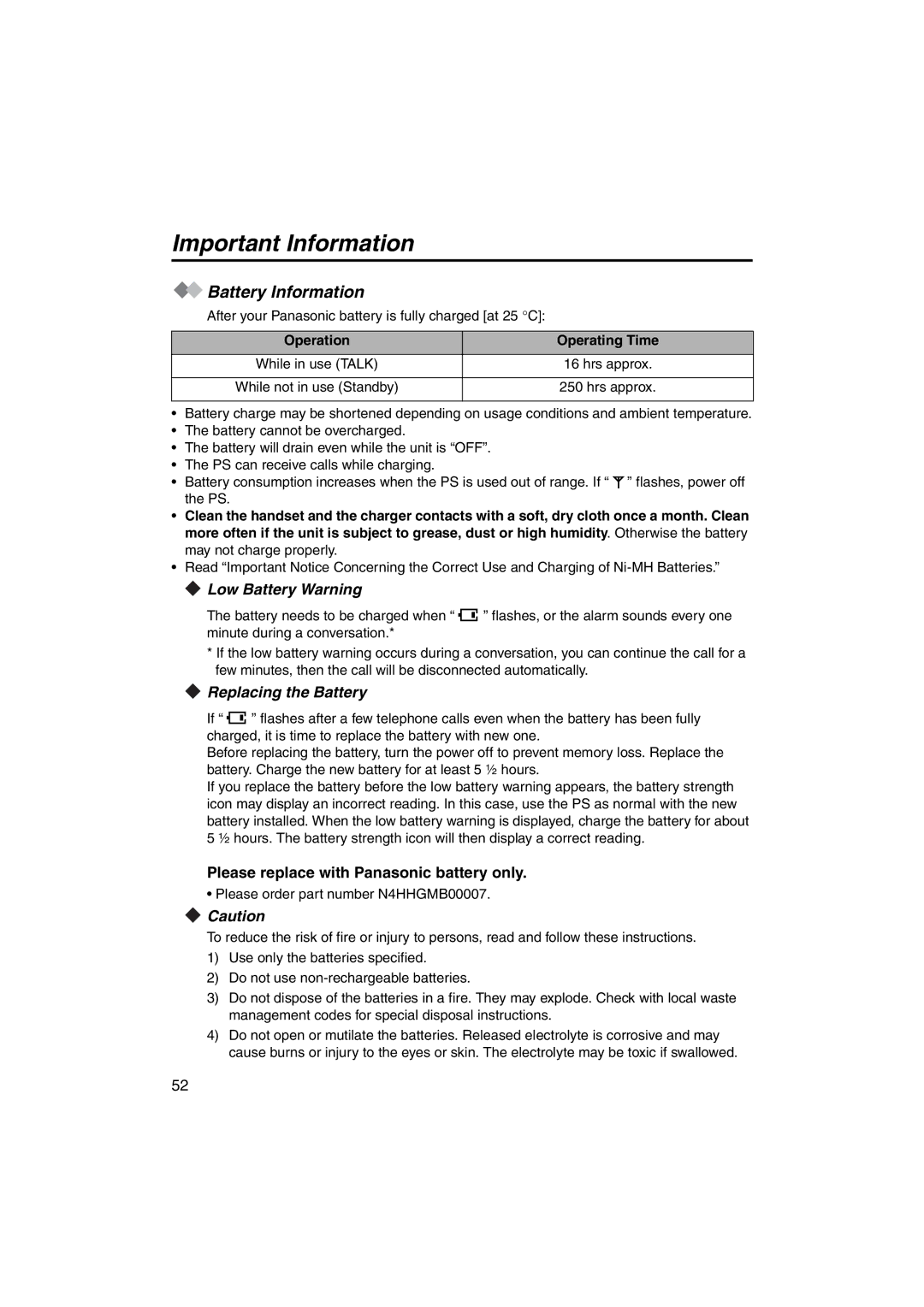
Important Information
 Battery Information
Battery Information
After your Panasonic battery is fully charged [at 25 °C]:
Operation | Operating Time |
|
|
While in use (TALK) | 16 hrs approx. |
|
|
While not in use (Standby) | 250 hrs approx. |
|
|
•Battery charge may be shortened depending on usage conditions and ambient temperature.
•The battery cannot be overcharged.
•The battery will drain even while the unit is “OFF”.
•The PS can receive calls while charging.
•Battery consumption increases when the PS is used out of range. If “ ![]() ” flashes, power off the PS.
” flashes, power off the PS.
•Clean the handset and the charger contacts with a soft, dry cloth once a month. Clean more often if the unit is subject to grease, dust or high humidity. Otherwise the battery may not charge properly.
•Read “Important Notice Concerning the Correct Use and Charging of
 Low Battery Warning
Low Battery Warning
The battery needs to be charged when “ ![]()
![]()
![]()
![]() ” flashes, or the alarm sounds every one minute during a conversation.*
” flashes, or the alarm sounds every one minute during a conversation.*
*If the low battery warning occurs during a conversation, you can continue the call for a few minutes, then the call will be disconnected automatically.
 Replacing the Battery
Replacing the Battery
If “ ![]()
![]()
![]()
![]() ” flashes after a few telephone calls even when the battery has been fully charged, it is time to replace the battery with new one.
” flashes after a few telephone calls even when the battery has been fully charged, it is time to replace the battery with new one.
Before replacing the battery, turn the power off to prevent memory loss. Replace the battery. Charge the new battery for at least 5 ½ hours.
If you replace the battery before the low battery warning appears, the battery strength icon may display an incorrect reading. In this case, use the PS as normal with the new battery installed. When the low battery warning is displayed, charge the battery for about 5 ½ hours. The battery strength icon will then display a correct reading.
Please replace with Panasonic battery only.
• Please order part number N4HHGMB00007.
![]() Caution
Caution
To reduce the risk of fire or injury to persons, read and follow these instructions.
1)Use only the batteries specified.
2)Do not use
3)Do not dispose of the batteries in a fire. They may explode. Check with local waste management codes for special disposal instructions.
4)Do not open or mutilate the batteries. Released electrolyte is corrosive and may cause burns or injury to the eyes or skin. The electrolyte may be toxic if swallowed.
52
